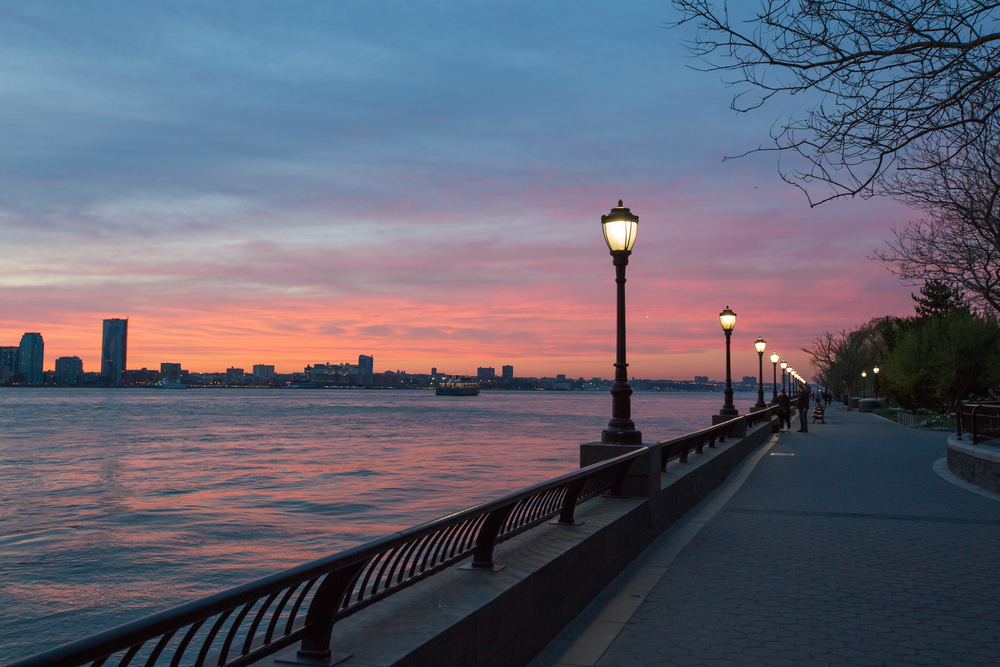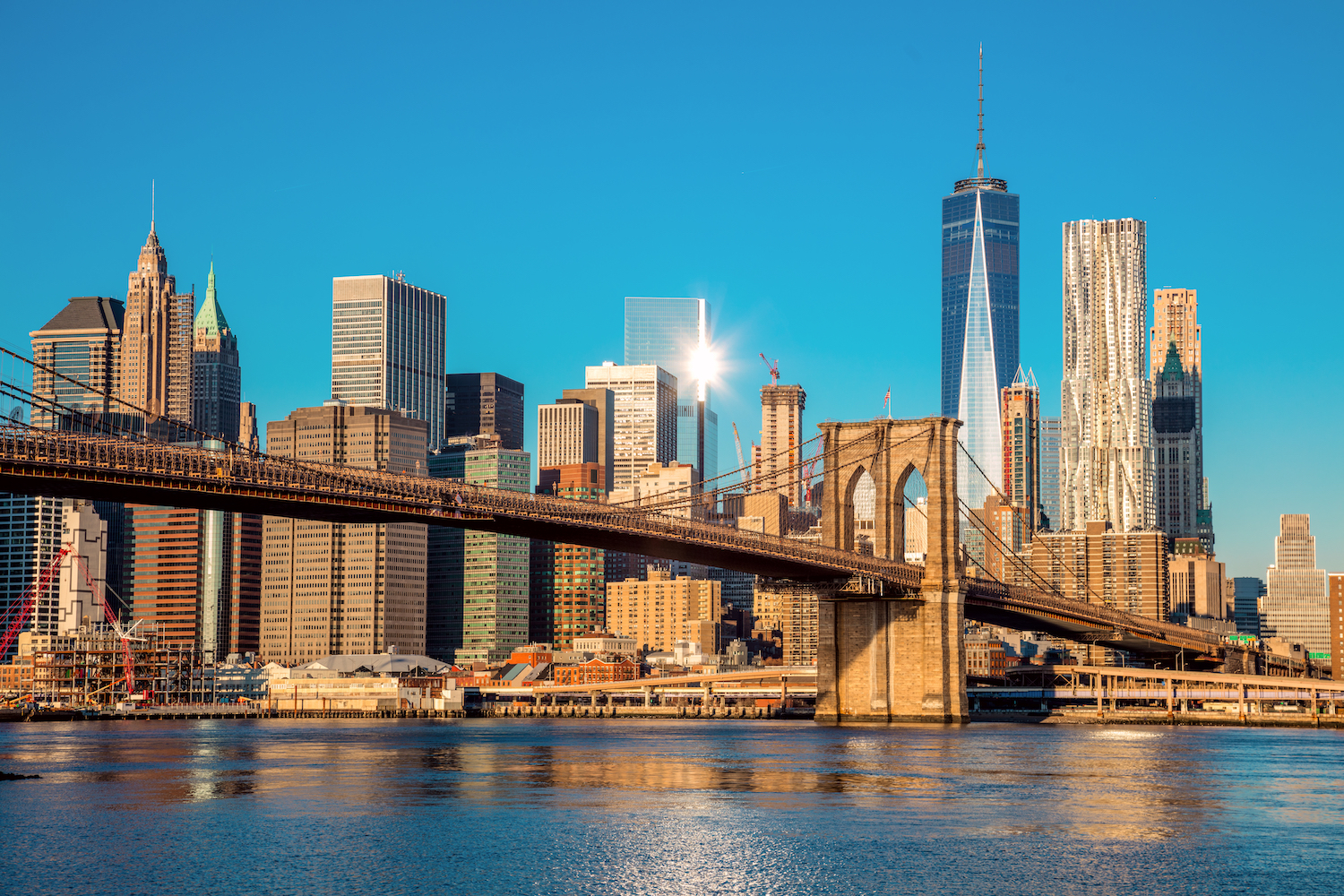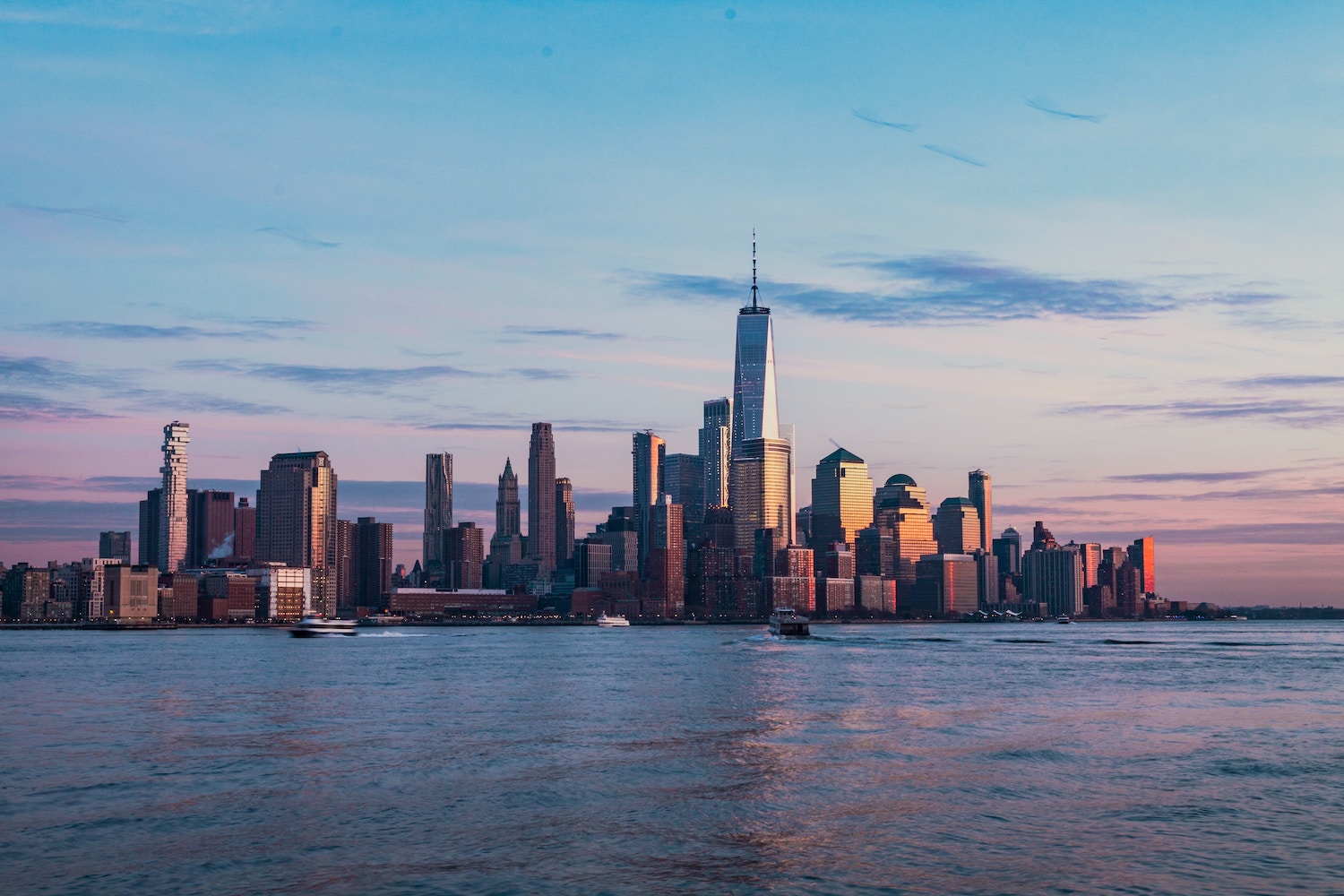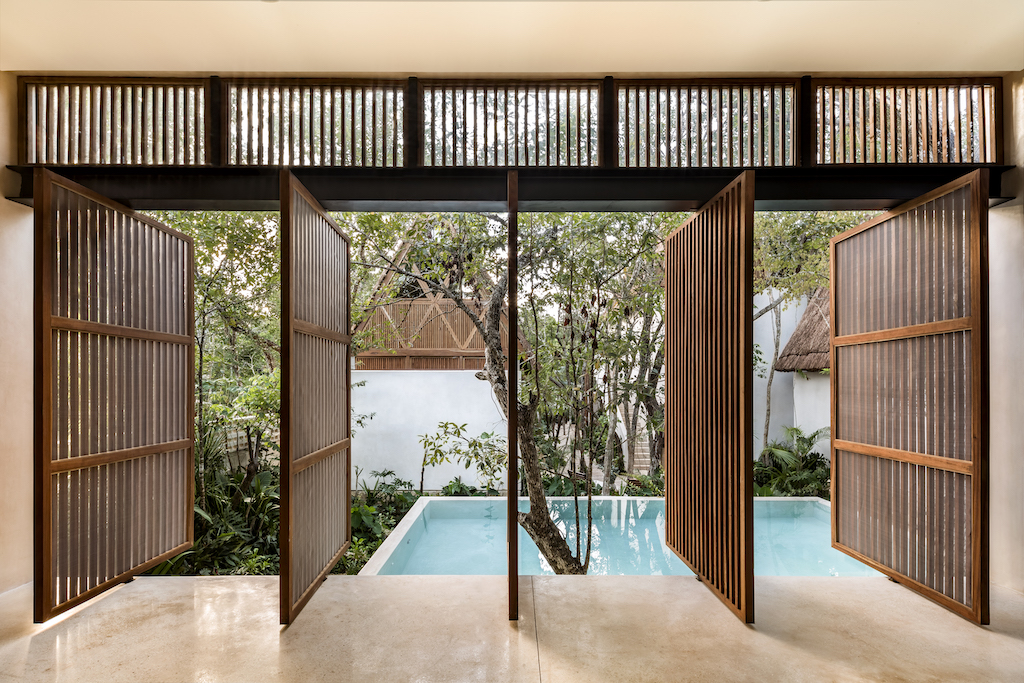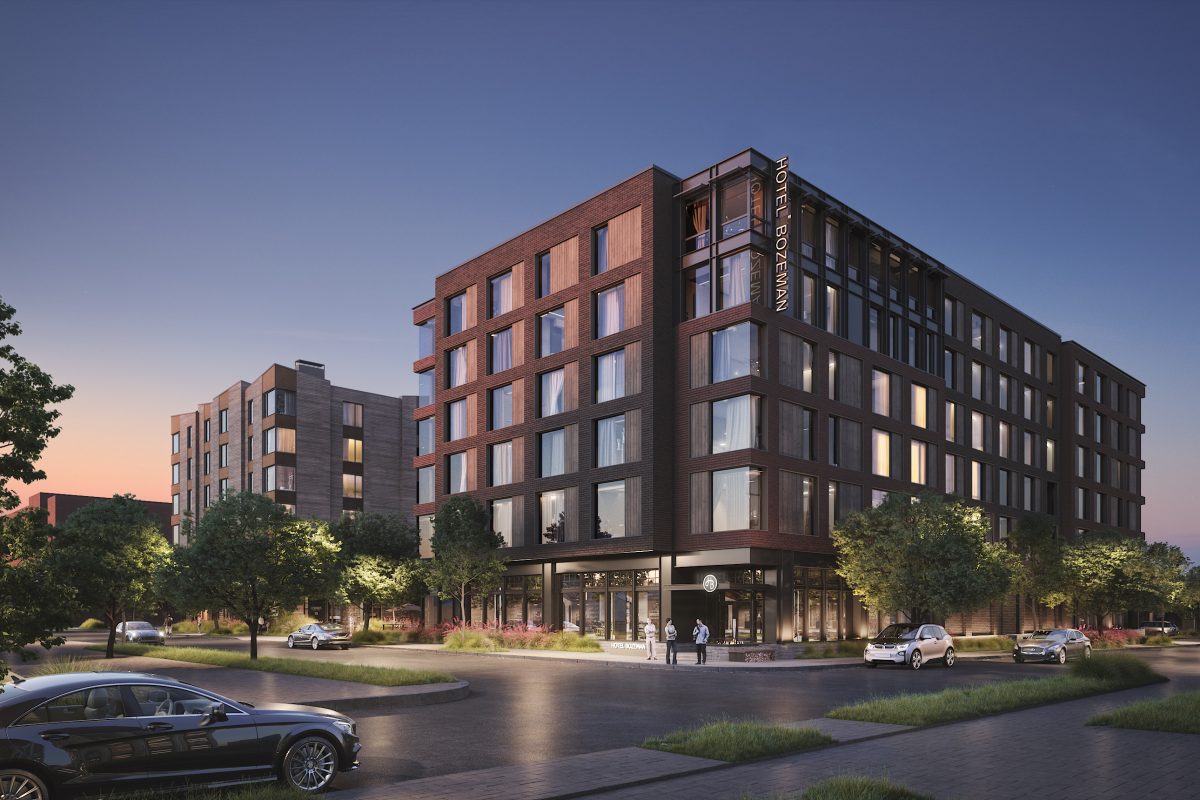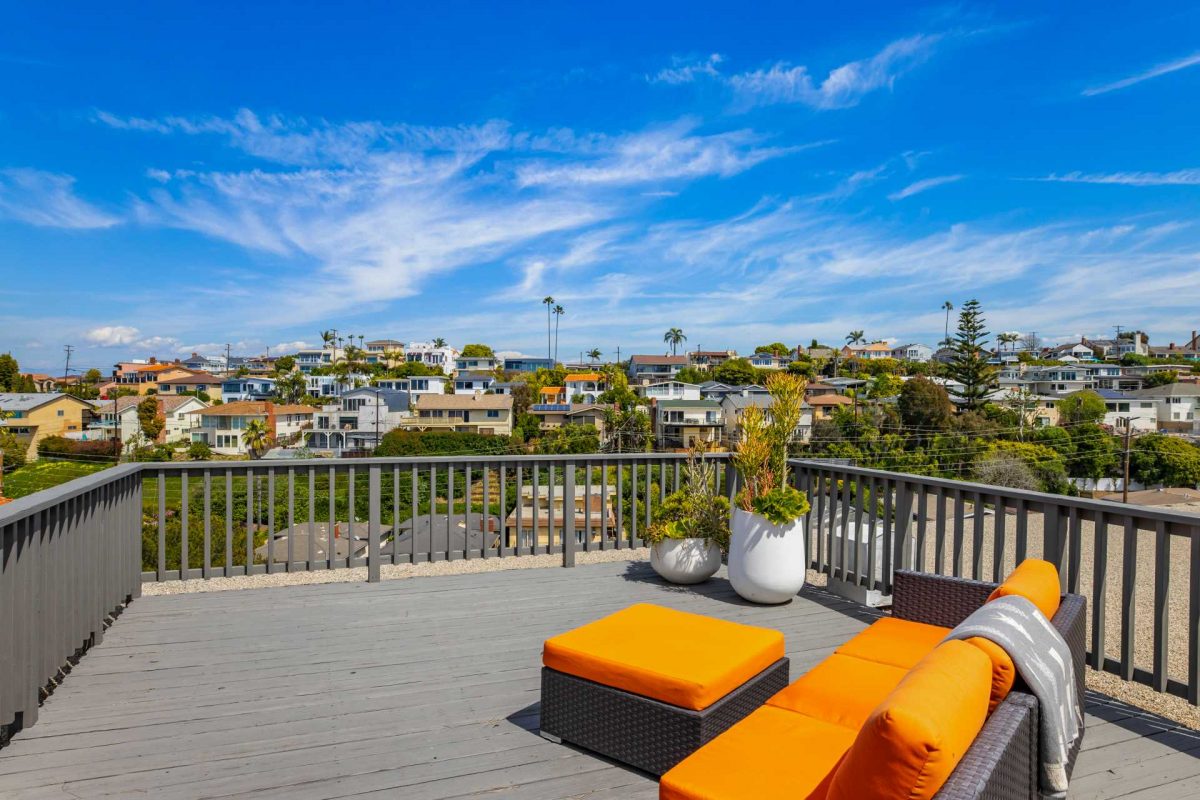MANHATTAN
Battery Park City Neighborhood Guide
Manhattan’s southernmost tip, the Battery, is rich with history, lush with green space, and a landmark location at the edge of Lower Manhattan’s Financial District. Scattered with high-rise buildings, executive office headquarters, and a mix of residences, restaurants, and retail, Battery Park City exemplifies New York City’s heritage, culture, and diversity. It’s one of Manhattan’s most coveted corners with access to everything and where anything’s possible.
Its design and development were debated for decades with the ultimate goal of bringing the suburbs to the city. The project would incentivize people to live downtown by offering an epicenter of residences, offices, and natural, open space. Built atop old piers and underused land, the area just below Tribeca has been restored and revitalized with surefooted vision and modern appeal. Some local highlights include frequent ferry rides to Ellis Island and the Statue of Liberty, the retail and restaurant mega plaza Brookfield Place, and a neighborhood nestled alongside premier parks, prime real estate, and vast waterfront views.
Battery Park City Real Estate Stats
MEDIAN SALE PRICE
$1,377,500
MEDIAN RENTAL PRICE
$6,836
An Abbreviated History of Battery Park City
Much of New York City was first occupied by the Lenape tribes who cultivated the land until Henry Hudson and fellow Dutch settlers embarked on the New World. A particularly promising Dutch discovery was the coastal strip of land developed and identified as Fort Amsterdam in 1626. Built to protect New Amsterdam and prevent attacks off its shoreline, artillery batteries lined the shores and defended the land, now known as The Battery. It was later controlled and commanded by the British until taken over by American troops during the Revolutionary War. The site became the center for celebration on Evacuation Day, the victorious moment for America when the last British troops departed the country.
In the early 1800s, the protective settlement became an entertainment destination when historic venues like Clinton Castle were converted to theaters. This particular facility was established as a fort amid growing tensions with the British that prompted the War of 1812. In 1823, it was deeded to New York City and opened as a restaurant and entertainment center. The fort transformed its purpose again in the 1850s and became New York’s primary customs and immigration center before relocating to Ellis Island in 1890. From 1896 to 1941, Clinton Castle was home to the New York Aquarium and the round, sandstone structure became a national monument in 1975. The round, sandstone structure represents the initial phase and ongoing growth of New York City.
Through the 1800s and early 1900s, the area encompassing what is now Battery Park City was known as Little Syria with ethnicities hailing from Lebanon, Greece, Armenia, and the Middle East. Battery Park was closed to the public from 1940-1952 to facilitate the construction of the Brooklyn-Battery Tunnel and Battery Park Underpass. By the 1950s, the popular, waterfront location lost its luster and livelihood with the rise of air transport and decay of the once-prosperous piers and docks. Amid the fluctuation of New York’s economy and the need for property development, Battery Park presented a cumbersome challenge for commercial and residential construction set to overcome the deteriorated ports and obsolete wharfs along the Hudson River. Development plans concentrated on a mix of parks and public waterfront access in conjunction with the formation of large commercial facilities and high-rise residences.
In the 1960s, Governor Rockefeller envisioned a revitalization of New York’s economy and introduced an innovative urban plan to upgrade the region. In 1968, the neighborhood of Battery Park City was designated in an effort to restore the harbor and revive the rundown piers on the Hudson River. As the city’s economy rebounded, the area was reclaimed and transferred in title to the Battery Park City Authority with the intention to restructure Manhattan’s southern tip to be more industrial, residential, and recreational.
New York’s fiscal crisis put the plan on hold until 1976, when the area was renewed with 92 acres of landfill derived from rock, soil, and sand excavated during construction projects such as the World Trade Center, the NYC Water Tunnel, and Staten Island’s New York Harbor.
New construction continued through the 1980s with the establishment of the World Financial Center, the river esplanade, Stuyvesant High School, and several residential neighborhoods including Rector Place. In the early 2000s, massive modern residential buildings continued to emerge and justified Battery Park City as one of Manhattan’s most proximate, private, and desirable places to live.
NEIGHBORHOOD BOUNDARIES
-
Hudson River/Battery Park City Esplanade to the West
-
Hudson River/N Esplanade to the North
-
West Side Highway to the East
-
Hudson River/Battery Park City Esplanade to the South
| Chambers Street | A C |
| Park Place | 2 3 |
| World Trade Center | E |
| Cortland Street | N R W |
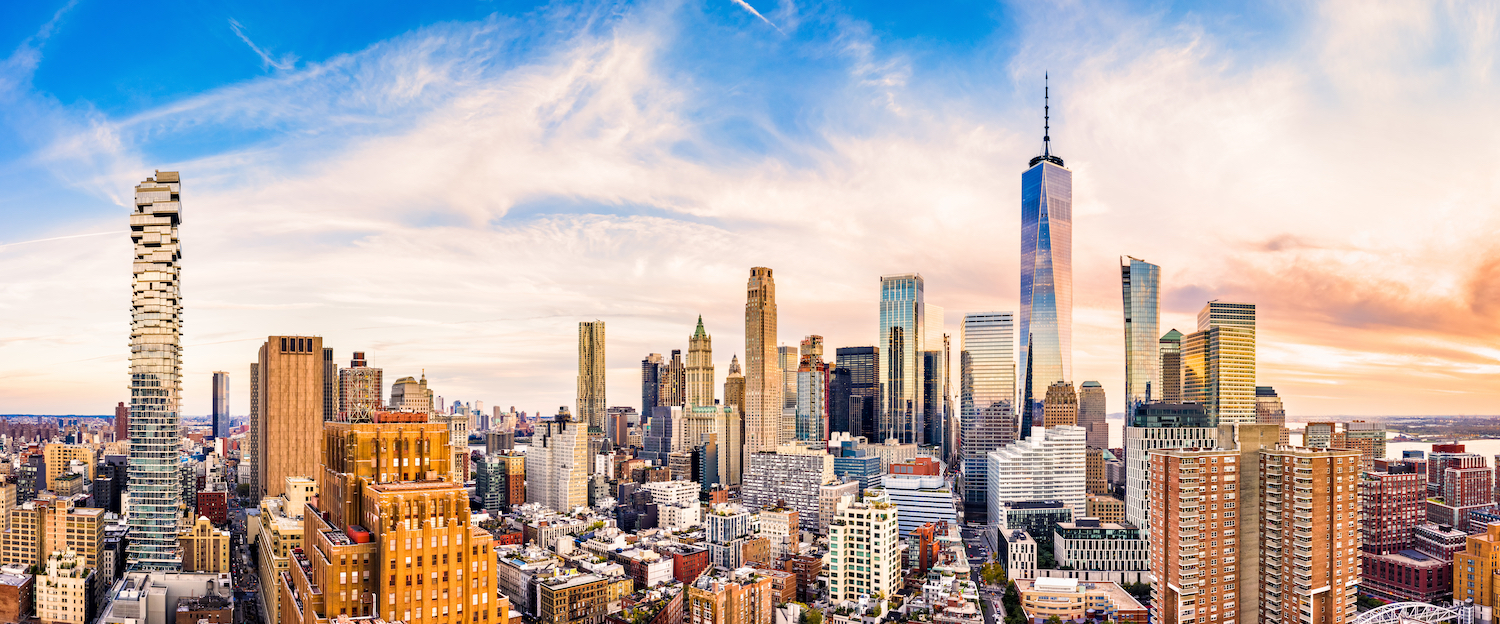
Residents Love This Neighborhood Because
-
Clean, well-maintained, peaceful appeal
-
Convenient shopping and dining district
-
Green space, parks, and playgrounds
-
Historic Site at the southernmost tip of Manhattan
- Monuments honoring soldiers, explorers, inventors
- Sensational views of the Statue of Liberty, Freedom Tower, and NJ skyline
- Waterfront access and activities
What to expect
| Cafés |
+7 |
| Colleges / Universities |
1 |
| Community Gardens |
1 |
| Dog Runs |
3 |
| Libraries |
2 |
| Parks |
11 |
| Playgrounds |
11 |
| Restaurants |
+18 |
| Yoga Studios |
3 |
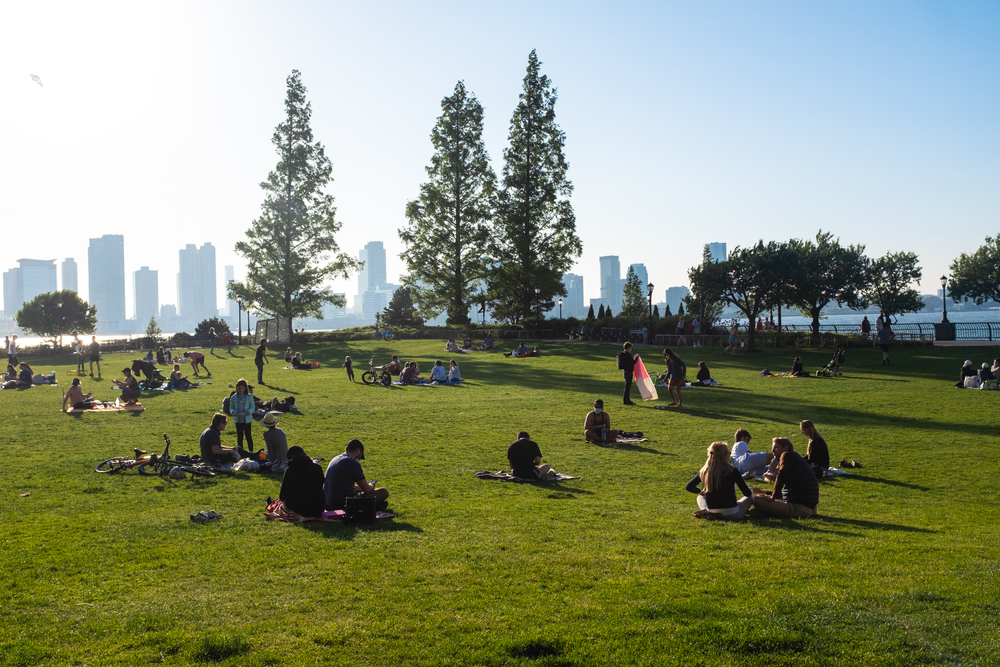
Battery Park City Landmarks and Cultural Institutions
A NEIGHBORHOOD TOUR
Brookfield Place
Formerly the World Financial Center, Brookfield Place is a dynamic plaza with a plethora of high-end retail, renowned restaurants, and corporate office space. Its vast grounds, contemporary design, convenient shopping, and waterfront dining make it one of downtown Manhattan’s most popular cultural and commercial destinations.
Castle Clinton National Monument
Built as a naval fort in the early 1800s to prevent a British invasion, this site later became the first immigration station welcoming over 8 million people into the United States during the second half of the 19th century. Also known as Fort Clinton or Castle Garden, the circular structure made of sandstone was restored and reopened in 1975 as a national monument. Today, the fort is open to the public, displays historical exhibits, and houses the Statue of Liberty’s ticket office and ferry service catering to over 3 million visitors each year.
South Cove
Completed in 1987, this waterfront, multi-level retreat is a carved-out cove that connects the city with the edge of the Hudson River. Its hillside, lined with boulders, trees, and seaside vegetation, leads down to the esplanade, touches the river’s high tide, and offers endless views along the Battery Park waterfront.
Esplanade Plaza
This pedestrian pathway attracts residents, tourists, and recreation enthusiasts. Stretching through Battery Park to the Tribeca border, the waterfront locale is ripe for relaxation with parks, benches, and riverfront views. It’s a popular spot for walking, running, sunbathing, biking, frisbee, and sports with lots of lawn and a laid-back vibe.
Irish Hunger Memorial
This unique, elevated memorial captures the breathtaking Irish countryside while commemorating the Great Irish Famine, also known as the Great Hunger. During a five-year span in the mid-1850s, disease destroyed the country’s dependant, easy-to-grow potato crop. The monument conveys the permanent effects the crisis had on Ireland’s politics, demographics, and culture. Tour the landscape of Ireland and observe famous quotes that convey the history of world hunger.
Museum of Jewish Heritage - A Living Memorial to the Holocaust
A powerful and riveting remembrance of the lives lost in the Holocaust, the museum celebrates and conveys the Jewish culture from centuries ago to today. In addition to photos, films, and artifacts on display, the eloquent Garden of Stones exhibit spotlights trees growing from rocks, symbolizing growth and life through adversity and hard times.
The National September 11 Memorial Museum
Built in 2006 on the former site where the Twin Towers stood, this meaningful museum exhibits artifacts, images, and personal stories of sorrow, sympathy, and courage. Outside the museum is a must-see memorial with calm, continuous waterfall pools bordered by bronze and engraved with the names of nearly 3,000 victims. A trip to Ground Zero that poignantly captures the country’s unprecedented, ongoing moments of loss, recovery, and hope.
North Cove Yacht Harbor
Renovated in 2016, the North Cove Marina at Brookfield Place offers floating docks, multiple slips, and picturesque harbor views. In the shadows of the Freedom Tower and lower Manhattan, this luxurious launchpad offers a unique waterway to explore the history and highlights of New York City.
Robert F. Wagner, Jr. Park
This park, named for the former NYC deputy mayor, city planner, and Board of Education president, offers panoramic views of the city, the river, and the Statue of Liberty. Fragrant flowers and native plant life surround two pavilions and ample lawn space suitable for recreation, relaxation, and a release from the action of Lower Manhattan.
Rockefeller Park
Home to the largest lawn in Lower Manhattan, this popular destination is a warm-weather staple for picnics, playgrounds, sunbathing, and sports. The dog-friendly park contains fresh gardens, basketball courts, ping pong tables, public art and sculptures, and the serene Lily Pond and its whimsical waterfall.
Architecture in Battery Park City
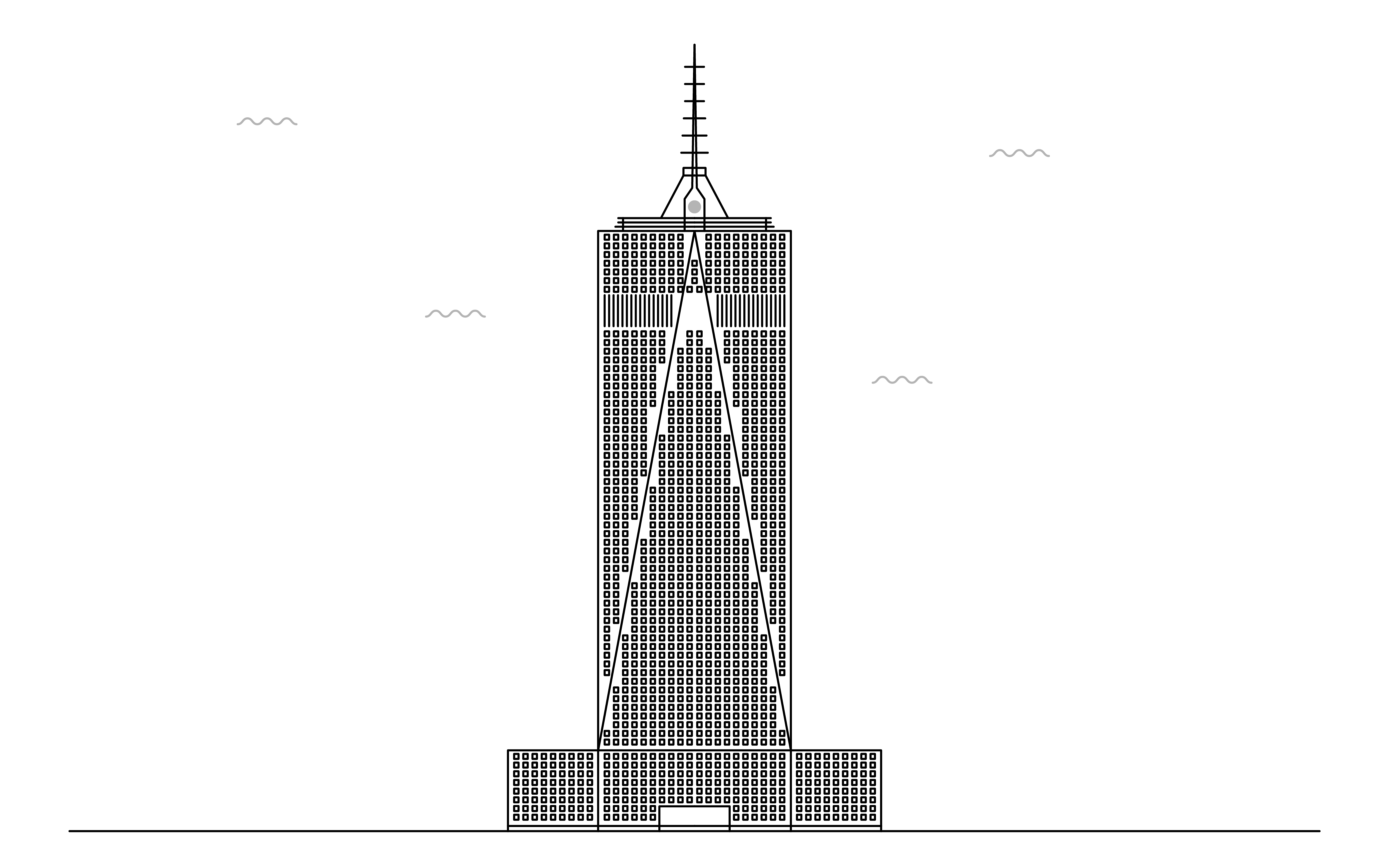
MODERN
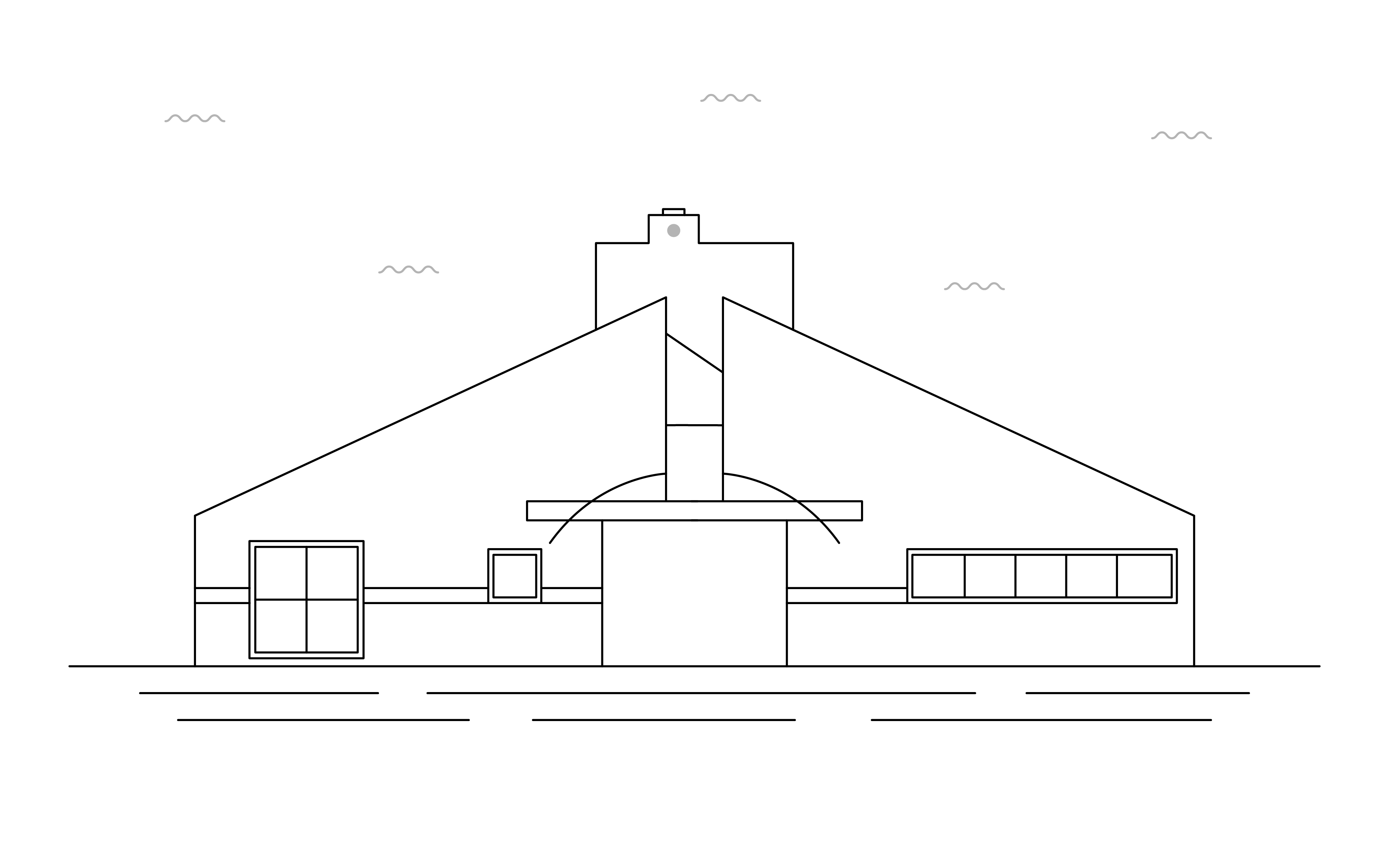
POSTMODERN
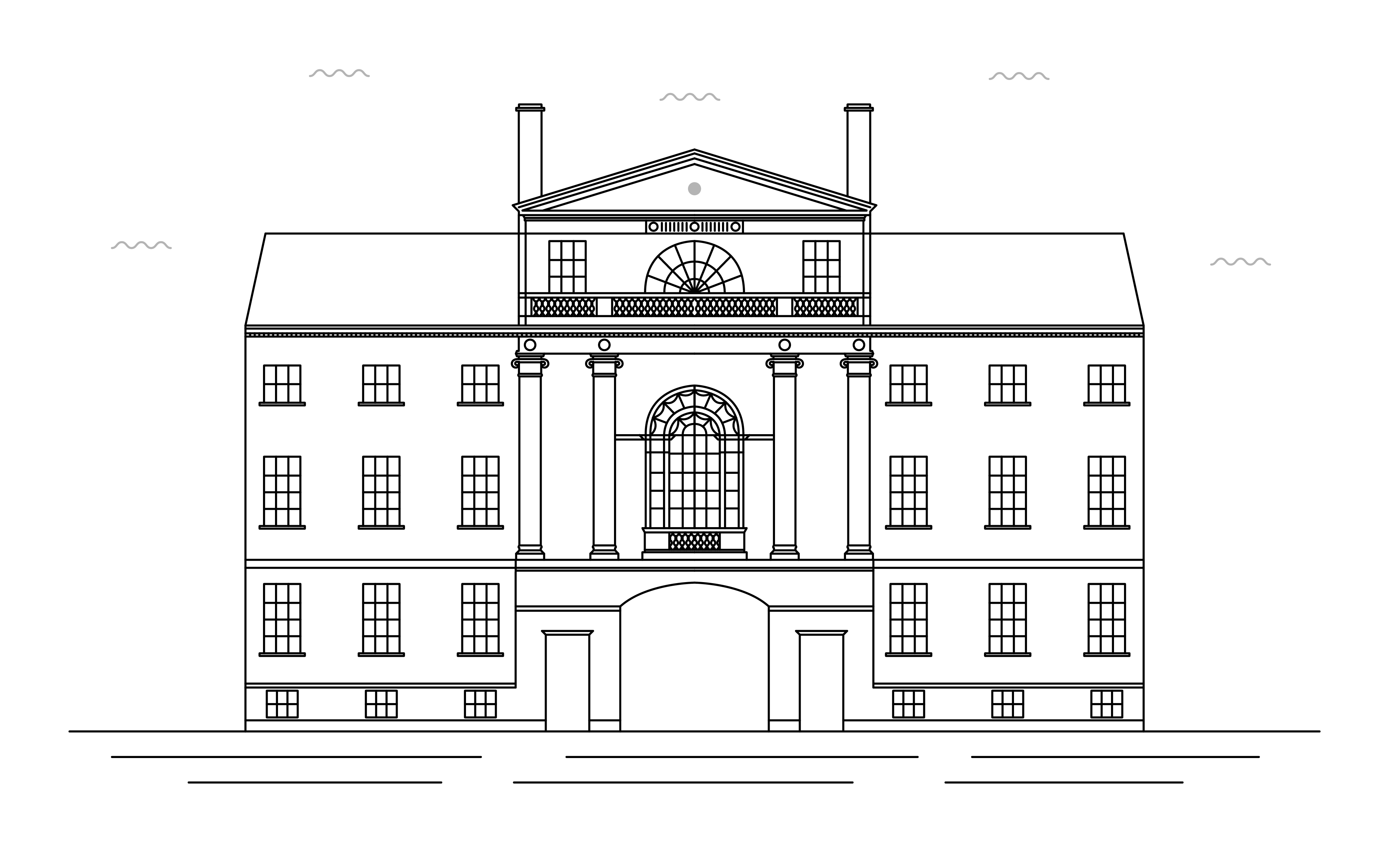
Neo-FEDERAL
Notable New Yorkers
Who Have Lived in Battery Park City

TYRA BANKS
Supermodel & TV Host

CHACE CRAWFORD
Actor

LEONARDO DICAPRIO
Actor

RUSSEL SIMMONS
Music Producer & Entrepreneur

OLIVER STONE
Movie Director
Popular Food & Drink

ANASSA TAVERNA
104 North End Avenue

SCHILLING
109 Washington Street

BLUE BOTTLE COFFEE
150 Greenwich Street

EL VEZ AND BURRITO BAR
259 Vesey Street

GIGINO AT WAGNER PARK
20 Battery Place

L'APPART
225 Liberty Street

LE DISTRICT
225 Liberty Street

LIBERTY BISTRO
225 Liberty Street
All Notable New Yorker photos courtesy of Wikipedia via Wikimedia Commons. Photo of Tyra Banks by VOGUE Taiwan; Photo of Chace Crawford by David Shankbone; Photo of Leonardo DiCaprio by Christopher William Adach from Mexico;Photo of Russell Simmons by David Shankbone; Photo of Oliver Stone by Ivan Gonzalez;

